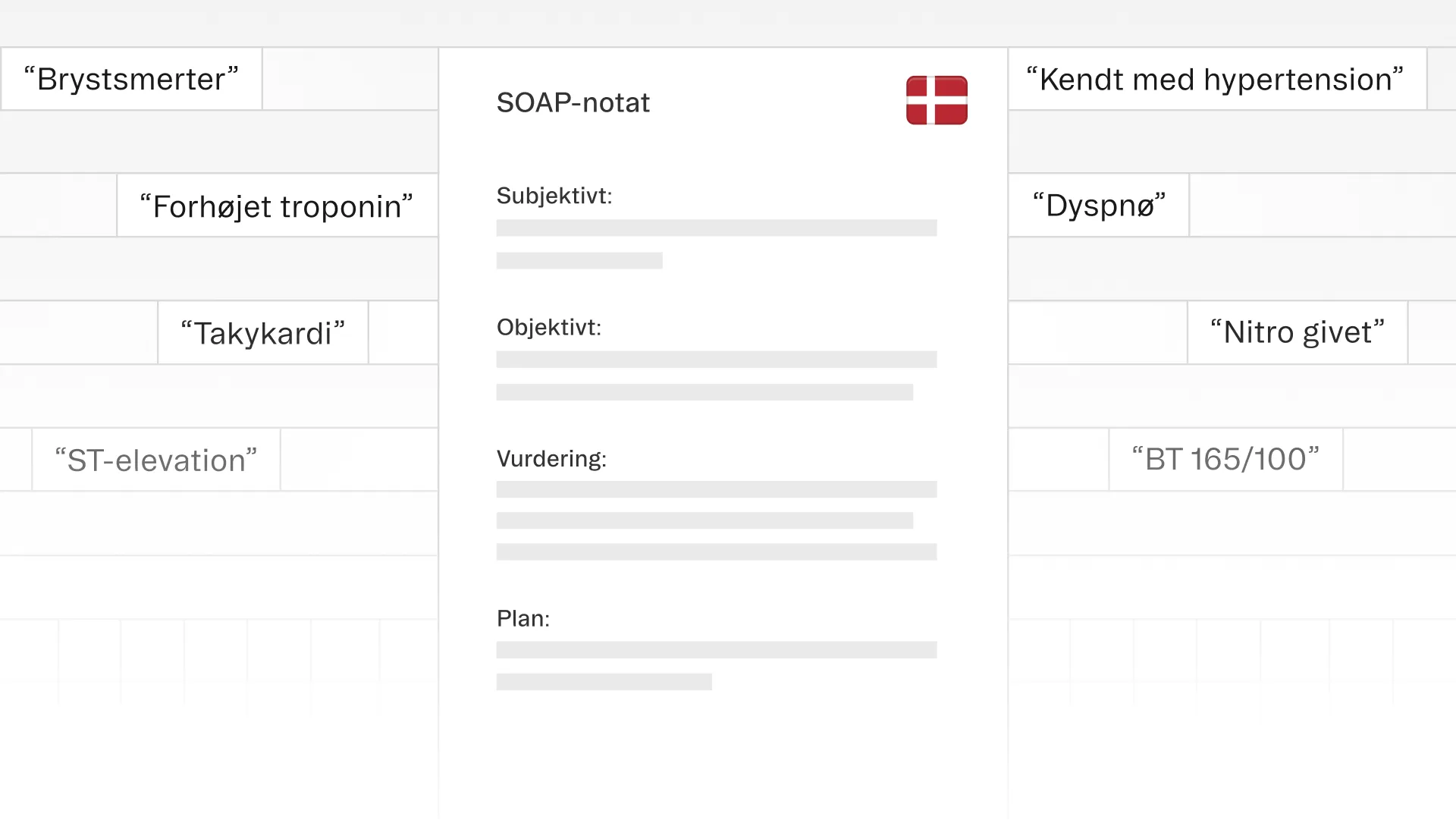We lowered prices to help developers build healthcare AI apps faster
%20(3).png)
Infrastructure efficiency improvements translate directly to your build budget. Here's what changed and what it means for healthcare developers.
Starting today, Corti's API pricing reflects major performance optimizations across our infrastructure. Development teams building ambient scribes, clinical automation, and reasoning systems are already reporting total cost reductions approaching 50%.
This isn't a limited promotion. These are permanent pricing changes driven by infrastructure efficiency gains we're passing directly to builders.
What changed
Three core pricing updates went live across all customer accounts:
- Base token rates dropped 20%. Text input processing now costs $4 per million tokens (down from $5). Text output generation costs $16 per million tokens (down from $20). Every text-based workflow, from transcription refinement to structured note generation, just got 20% cheaper to run.
- Document generation costs cut in half. The
/documentsendpoint now costs 50% less while maintaining current template quality, processing speed, and clinical accuracy. Teams generating structured clinical documentation at scale see immediate margin improvement with zero configuration changes.
- FactsR reasoning layer costs down 30-40%. Our clinical reasoning endpoint got more efficient. The FactsR API, which powers evidence-based clinical insights and decision support, now costs 30-40% less per invocation. Workflows that layer reasoning on top of transcription or documentation now fit tighter budgets.
Why this matters for healthcare builders
High infrastructure costs create artificial scarcity. Expensive API calls mean fewer experiments, slower iteration cycles, and features that never ship because the unit economics don't close.
Lower prices remove those constraints.rove
Development teams building real-time ambient scribes report the most dramatic impact. A typical workflow might chain speech recognition, language model refinement, structured document generation, and clinical reasoning. Optimizations across that entire stack compound into total cost reductions approaching 50%.
That's not incremental improvement. That's a different build environment.
More clinical reasoning per dollar means more aggressive feature development, tighter feedback loops, and products that can serve broader populations. The same budget that covered 1,000 patient encounters now covers 2,000. Or the cost structure that made a feature marginal now makes it core.
Corti Assistant pricing remains stable
While API infrastructure pricing drops, Corti Assistant maintains its current pricing structure.
Corti Assistant is a complete product with its own roadmap, ongoing investment, and expanding capabilities. The API price reductions come from infrastructure efficiency gains at the platform layer. Assistant pricing reflects the full value of a finished solution that integrates reasoning, safety guardrails, dictation handling, summarization, and deep medical context into a production-ready package.
Stable Assistant pricing enables continuous product improvement without quality trade-offs. Every efficiency gain in the underlying platform benefits Assistant performance, and those gains are reinvested in more accurate reasoning and more intelligent clinical workflows rather than in incremental price cuts.
The distinction matters for teams evaluating build versus buy decisions. API infrastructure provides primitives for composing custom workflows. Assistant gives you a complete solution optimized for clinical documentation. Lower API prices make custom builds more economically viable. Stable Assistant pricing ensures the managed solution continues to improve at high velocity.
Both paths forward just got stronger.
The Jevons Paradox for healthcare AI
When infrastructure gets cheaper and more efficient, usage doesn't stay flat. It expands.
Jevons Paradox, originally observed with coal efficiency improvements during the Industrial Revolution, describes how efficiency gains often increase total consumption rather than decrease it. Better coal engines didn't reduce coal usage. They made coal-powered applications economically viable in contexts where they weren't before, driving total consumption up.
The same dynamic applies to healthcare AI infrastructure. Cheaper, more efficient APIs don't just reduce costs for existing workflows. They unlock entirely new use cases that weren't economically feasible before.
A clinical reasoning feature that was too expensive to run on every encounter becomes standard. An ambient documentation system that targeted only high-revenue specialties now works across primary care. Real-time decision support that lived in a backlog ships to production.
Lower prices create abundance, and abundance accelerates the entire sector's learning rate.
A platform that keeps improving
Infrastructure should get better over time, and builders should feel those improvements directly.
When the platform becomes more efficient, costs drop. When accuracy improves, all workflows benefit immediately. When new capabilities arrive, they integrate into existing architectures without migration work.
Our goal is to continue lowering the barrier to entry for new workloads, new tools, and new ideas. Platform improvements compound. Efficiency gains unlock new use cases, which drive more usage, which funds more platform investment, which creates more efficiency gains.
Healthcare deserves AI infrastructure that follows this trajectory. High prices were slowing progress down. Now they're not.
What's next
These pricing changes went live automatically across all accounts. No migration work, no configuration updates, no performance trade-offs.
If you're building on Corti, your workflows just got more efficient. If you're evaluating infrastructure options for a healthcare AI application, the economics shifted in favor of medical-grade pipelines over general-purpose alternatives.
Healthcare deserves AI infrastructure that's reliable, accurate, and accessible at scale. High prices were slowing that down. Now they're not.
Resources:
- API Documentation
- AI Studio (explore workflows with updated pricing)
- Book a scoping call with our technical team




